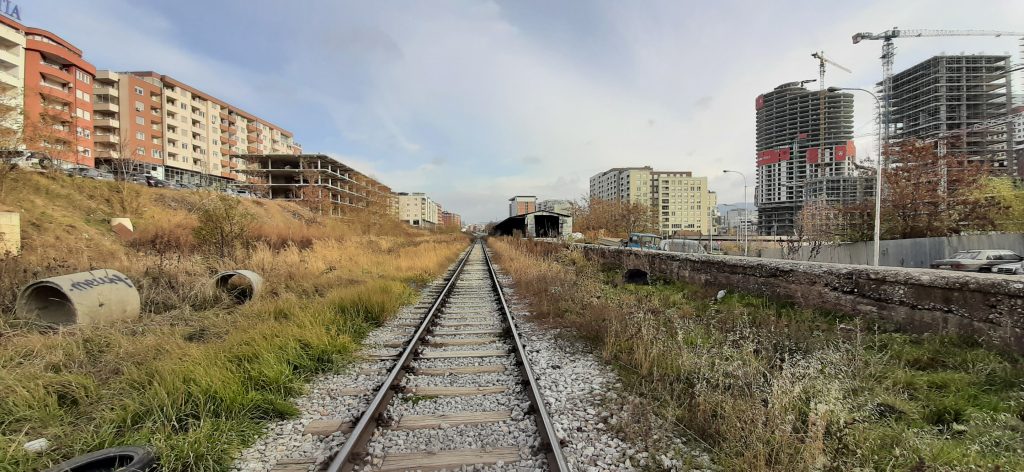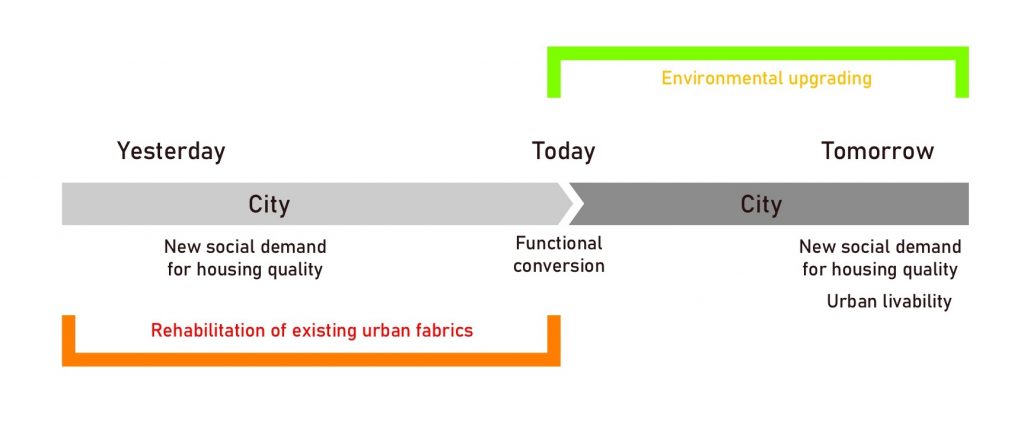Gazmend Uka
Kosovo’s cities of today and tomorrow
Between environmental upgrading and rehabilitation of the existing urban fabrics: requirements of functional conversion and new social demand of housing quality and urban liveability.
Supervision by Associate Prof. Dipl.-Ing. Dr.techn. Angelika Psenner
Kosovo is the youngest country in Europe. Located in South-Eastern Europe, Kosovo is characterized by a central position on the Balkan. It is bordered by: Albania, Montenegro, Serbia, and North Macedonia. The surface of Kosovo is 10,907 km² with a population of 1, 739, 825 inhabitants. Just in the twentieth century, it faced five different periods that initiated larger changes in the cities. At the beginning of the 21st century, the democratic changes in all Balkan countries brought a completely different social setting for urban planning. This movement resulted in a change of urban areas, starting from infrastructure, welfare, security, illegal construction, and privatization in the cities of Kosovo. The transition process after 1999, from occupied country to under United Nations missions in Kosovo, was a problematic phase for cities because the planning shifted from conventional planning to strategic planning, lacking in the implementation of these laws and planning documents. The second phase was during the time of independence of Kosovo after 2008, because this time Kosovo had its laws for cities, and the last phase is the process of negotiations for European integration.
The cases that will be studied in this research are Kosovo’s cities. Kosovo has 38 municipalities that are divided into urban areas and rural areas. Urban area consists of the city and rural area with cities periphery and together they make the municipality. The selection of six cases is based on the uniqueness of the cities done by a brief analysis of all the Kosovo cities that implies knowledge of all Kosovo’s cities that the selected cities differ. Based on the research title the focus of this study is to target: a city that has urban fabrics rooted in ancient times, that needs rehabilitation-this case is the Vushtrri city; the largest city by the population and the capital city of Kosovo, Pristina city(phot.1); the smallest city and municipality in itself, Mamusha declared by law as cities on 2008; city from the industrial revolution, Mitrovica; and unique case of the Vitia city that has the Kllokot city in the center of its territory.

Picture 1: City of Pristina between environmental upgrading and rehabilitation of the existing urban fabrics, Kosovo
This research will use the case study strategy. This research will be done with a combination of primary and secondary data sources and various data collection methods. The data collection methods that will be used in this research are a mix of both methods, qualitative: urban diary written by Kosovo’s architects about the city, open-ended questioners for housing quality, unstructured interviews and semi-structured interviews with the key stakeholders in local and central level. Interviews with professors of faculties of architecture in the private and public sector about curricula on urban planning and interviews with the citizens. The unstructured observation will include the direct observation of the Kosovo cities and observation of old images, orthophotos, and videos from archives that bring an old image of the Kosovo’s cities, and the analysing of 3D models of urban blocks for housing quality and urban liveability, and quantitative: secondary data from governmental institutions of Kosovo Statistics Agency for census data, for migration, for agriculture census, for population forecasts. Data from the Ministry of Spatial Planning, Environment and Infrastructure about the process of spatial planning in the central and local levels. Data from Departments of Urbanism from local levels and data from local, national, and international NGOs that have in focus environment, spatial planning and, monitoring.
This study aims to understand the city of today and the vision of Kosovo’s Spatial and Municipal Plans for the city of tomorrow. The research objectives to achieve research aim are to examine the Kosovo Spatial Plans through the city of today and tomorrow, to study the historical image of today city and future upgrading, to explore rehabilitation of the existing urban fabrics of Kosovo’s cities, to explore the new social demand for housing and urban liveability, to look at the requirements of functional conversion in Kosovo’s cities and to explore environmental upgrading and protection of agricultural land of the cities.
Therefore, the purpose of this research is to attempt to answer the following question:
How Kosovo today’s cities can rehabilitate the existing urban fabrics and be the cities of tomorrow through environmental upgrading?

Figure 2: Illustration of the research proposal
The expected outcome of the study is to get knowledge about how the city of today is going to be a city of tomorrow between rehabilitation of the existing urban fabrics(fig.2) and environmental upgrading, protection of agricultural land and due to requirements of functional conversion and new social demand of housing quality and urban liveability and how these concepts are applied in practice, policymaking and understood among actors who are involved in urban development processes.
#rehabilitation #environmental upgrading #functional conversation #housing quality #urban agriculture
